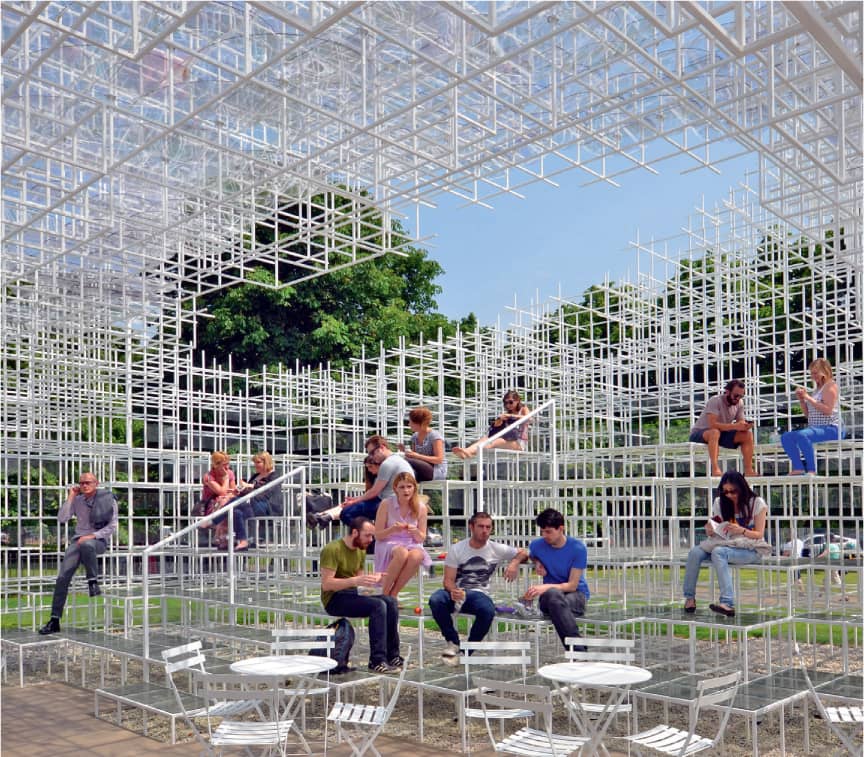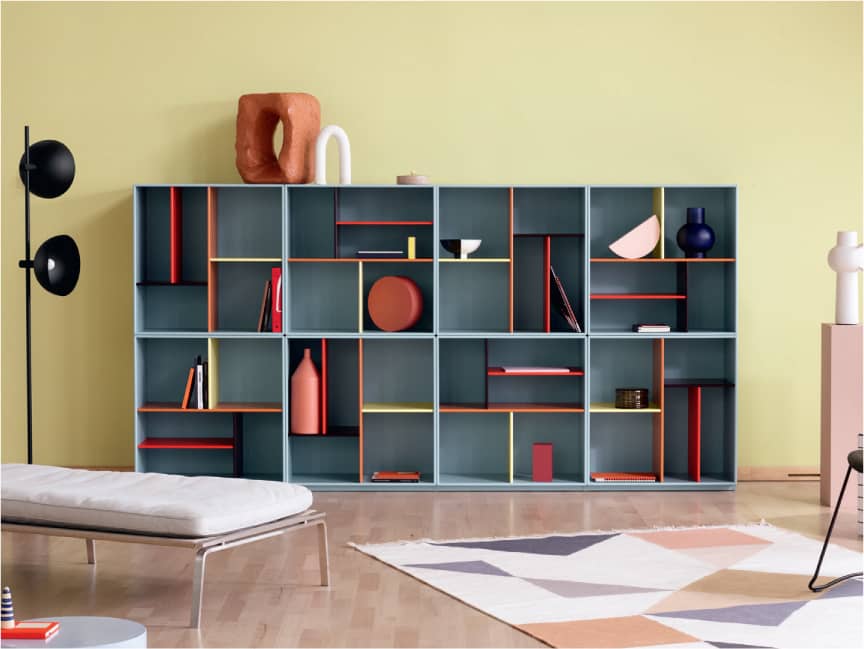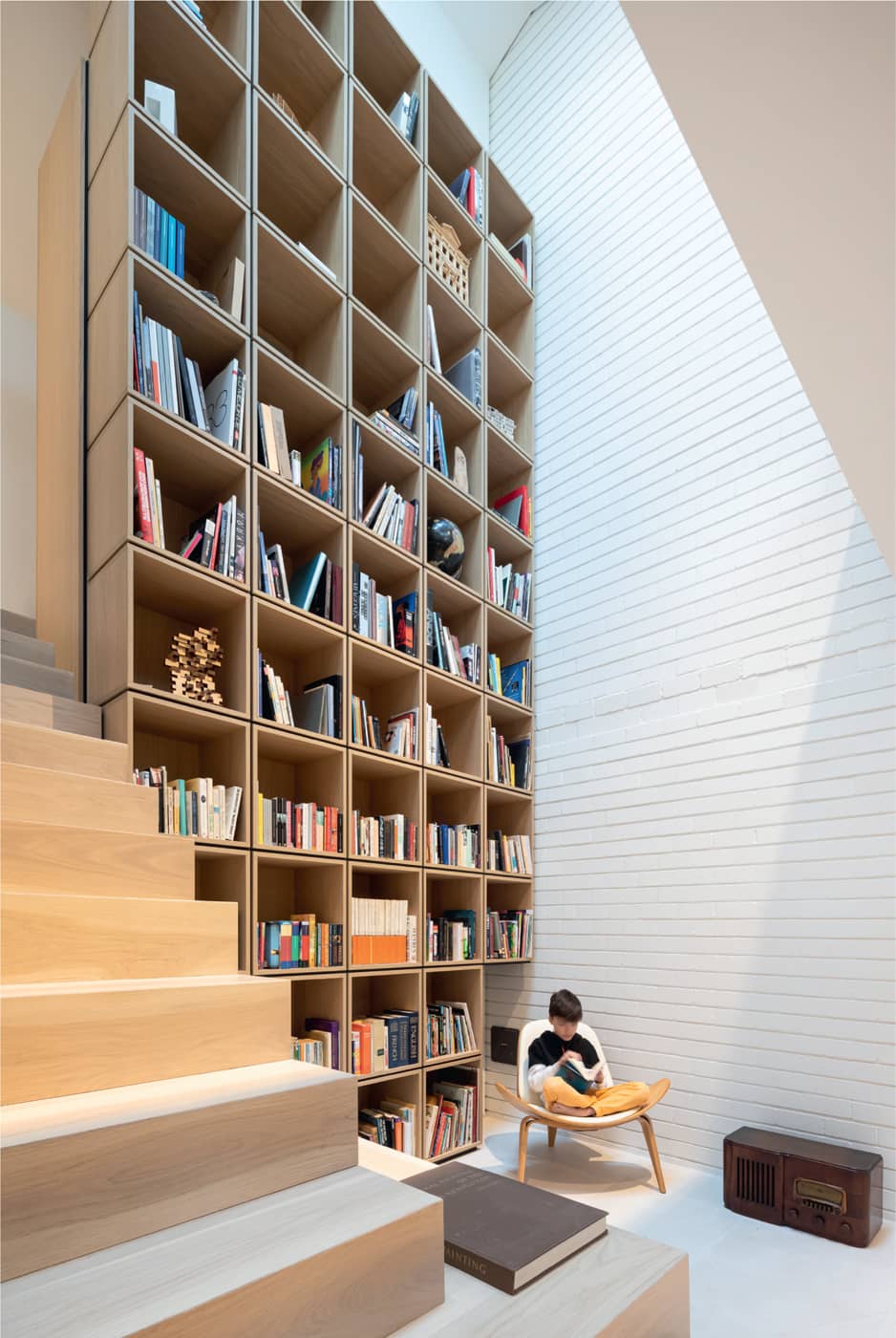39 Grid
A framework of lines at right angles to each other.
Grids are important organizing elements that enable designers to measure, place, and organize objects on surfaces and in a space. Grids also have an impact on scale; small aggregated elements arranged in a grid can make spaces feel more graphic, and bring both a visual and tactile motif to a design strategy.
Wall coverings that are used in an interior are by the nature of their design often aggregated into grids, and many types of floor coverings also come in different, incremental dimensions that make them useful in laying out spaces and elements.
Volumetric grids have physical depth. Many structural systems used in a building provide opportunity for grids as organizing devices for a space. A waffle slab—a concrete construction system—can inform how walls are placed, and how elements are arranged underneath. Deep-cell ceiling treatments can also be used for a similar effect.
Open shelves and thinner elements and details can also impact how a wall surface is perceived, and panelized walls offer yet another grid-based system for coordination.

For his 2013 Serpentine Gallery Pavilion, Sou Fujimoto designed a delicate three-dimensional array of painted white poles that suggests enclosure.

Bookshelves are good examples of organizing grids. This collection by Montana Furniture in Denmark uses unexpected divisions to enhance the grid.

The Rafael Santa Ana Architecture Workshop designed a double-height shelving system to unify two floors of a house in Vancouver, British Columbia.
